2021 March 6
Venus as a planet
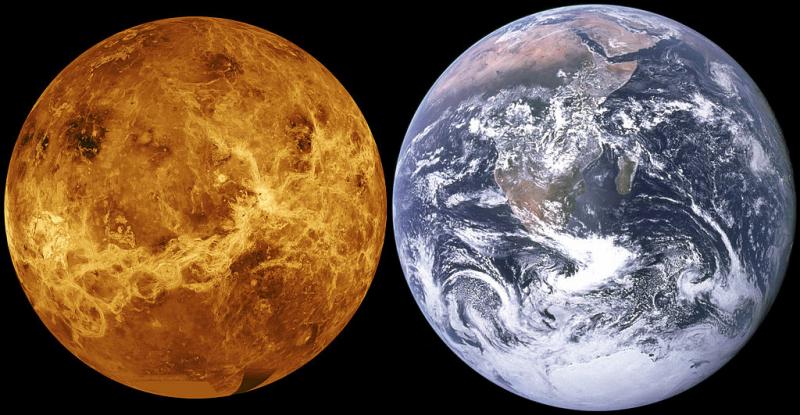
Introduction
Venus in the solar system
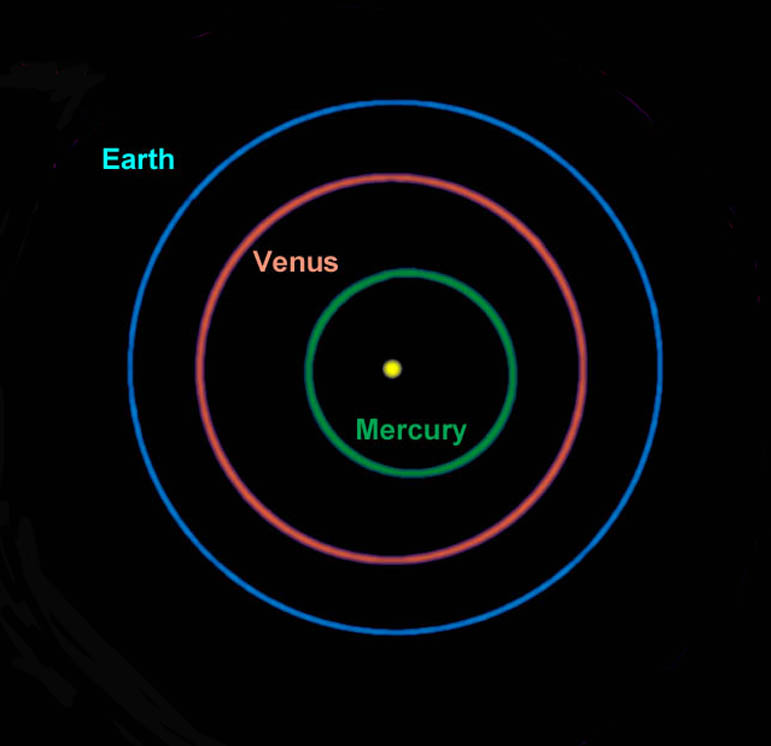
Venus as seen from Earth
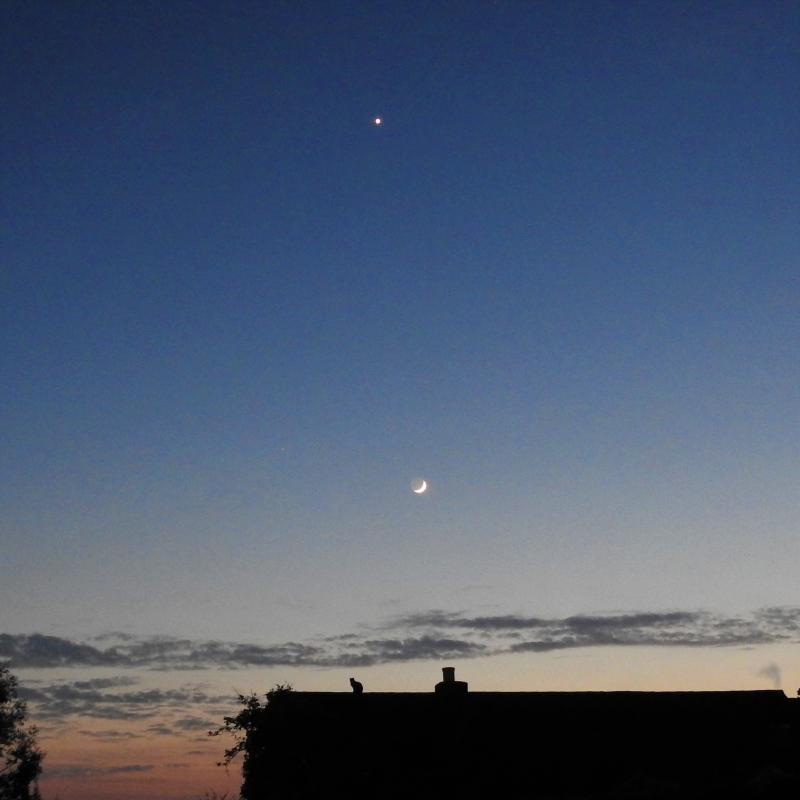
Being closer to the Sun than the Earth, Venus alternates between appearances as a ‘morning star’ and an ‘evening star’. It first appears close to the horizon just before sunrise or after sunset. As time passes it moves further and further out until it is 47o from the Sun. It then swings back in close to the Sun, becoming lost in its glare before emerging on the other side in the twilight. Once more it swings out to 47o before returning to the Sun’s glare to repeat the whole process again.
Throughout these motions Venus, when seen through a telescope, exhibits a full set of phases as described here.
Atmosphere
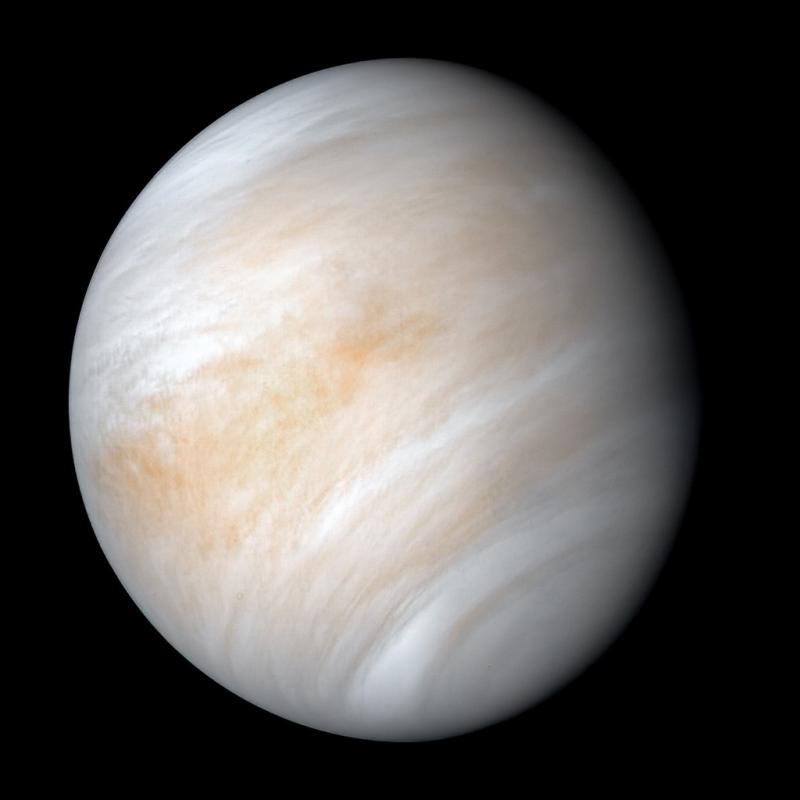
Through a telescope Venus appears as white/pale yellow disc. Visually little can be seen from Earth apart from vague diffuse shadings often at the limit of visibility. The position is somewhat clearer in both ultraviolet and infrared light and of course from space probes. Here markings are quite often seen and from spacecraft considerable detail can be discerned indicating clouds driven by winds in the planet’s atmosphere (Figure 4).
What we are seeing are reflective clouds high in Venus’ atmosphere. Surprisingly these are mainly composed of sulphuric acid and extend from 25km to 50km above the planet’s surface. Beneath these clouds the atmosphere is clear down to the surface.
Venus’ atmosphere is made up of 96.5% carbon dioxide and 3% nitrogen. The remaining 0.5% is made up of traces of a variety of substances including the sulphuric acid in the clouds that make Venus so reflective.
This huge predominance of carbon dioxide may seem surprising but in fact the Earth’s atmosphere would have much the same amount were it not for the fact the bulk of the carbon dioxide is locked up in the Earth’s rocks.
Globally the upper atmosphere completes one rotation around the planet in about 4 days, much shorter than the planet’s own rotation of 243 days. This results in a wind speed of around 100m/s (roughly 360km/h) Descending through the atmosphere the wind speeds drop off and by the time the surface is reached they are at little more than a walking pace, often less than 2m/s.
Venus’ atmosphere is extraordinarily dense with a mass 93 times that of the Earth. As a result the surface pressure is over ninety times that of the Earth’s atmosphere, equivalent to that encountered nearly a kilometre beneath the surface of our oceans.
Being closer to the Sun, Venus receives about 1.9 times the amount of radiation that the Earth does. However, because of the reflective clouds and absorption in the atmosphere only around 2.5% of the incident radiation reaches the planet’s surface. As a result, at the surface, the illumination is about the same as that on Earth on a heavily overcast day. Because the atmosphere is so dense it averages out the temperature on the planet and there is little difference between the night and day sides.
The dense atmosphere with its large amount of carbon dioxide has caused a runaway greenhouse effect to occur on Venus. This had led to temperatures on the surface averaging around 460oC, hot enough to melt lead!
Surface

Because of the all encompassing clouds nothing was known about the surface of Venus for a long time. It was not until the 1960’s and 1970’s that radar studies from Earth gave the first clues. Since then, radar and altimetry studies from orbiting satellites along with results from a small number of landers have greatly increased our knowledge.
There are two significant highland areas, Ishtar Terra, the size of Australia and Aphrodite Terra which is about the size of Africa (Figure 5). The former of these contains the massif Maxwell Montes a peak of which, at a height of around 6.4km, is the tallest mountain on the planet.
Geologically the surface of Venus is dominated by volcanic landforms. There are extensive plains of solidified lava covering about 75% of the planet. There are also a volcanoes numbered in their thousands, more than on any other planet in the solar system. It is usually considered that Venus’ volcanoes are long dead but there are indications of some possible activity on the planet. There have been large swings in the amount of sulphur dioxide in the atmosphere which could indicate emissions from active volcanoes. Also a small number of transient hot spots have been detected corresponding in position to volcanic features, the excess heat perhaps resulting from eruptions.
Images of the surface taken from spacecraft that have landed there reveal a bleak, rocky terrain.
One surprise was the comparatively small number of impact craters. Mercury, Mars and the Moon are all heavily cratered as would be the Earth were it not for the active resurfacing processes taking place on its surface. Venus has somewhat more than one thousand craters on its surface, more than the Earth but still a relatively small number. The implication is that there is some process resurfacing the planet over a comparatively short time scale which is erasing craters. As a result, the average age of the surface is in the order of 750 million years, much less than the age of the planet which is measured in billions of years.
Life on Venus?
At the time of writing (early 2021) the claims have been challenged and there have been some issues with the data so it is fair to say the jury is still out.
There are three possibilities:
- The identification is mistaken and there is no phosphine on Venus.
- The identification is correct but the phosphine is produced by some not currently understood non-biological process.
- There is indeed primitive life in the atmosphere of Venus!
Only time will tell.
Conclusion
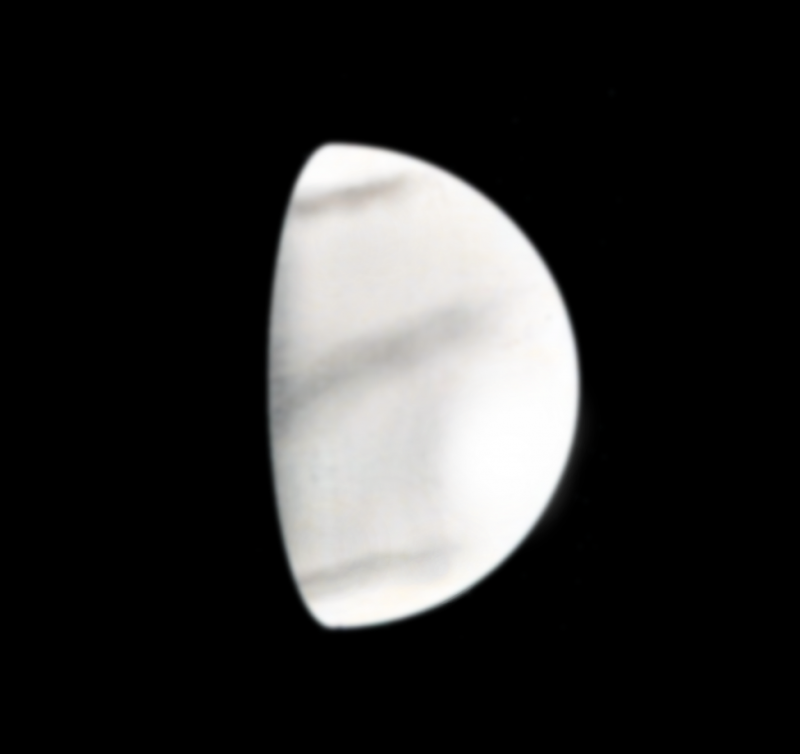
Venus can be an interesting target in a telescope and there is an active Mercury and Venus section details of which are here.
Figure 6 shows an example of what can be seen and is a drawing made by a skilled observer with an average sized amateur telescope.
For a gallery of amateur observations of Venus made by members of the British Astronomical Association please click here.
Credits
Figure 1: NASA, Public domain via Wikimedia commons.
Figure 3: Andrew Paterson.
Figure 4: NASA/JPL-Caltech, Public domain via Wikimedia Commons.
Figure 5: NASA Ames, USGS and MIT, Public domain via Wikimedia Commons.
Figure 6: Paul Abel.
| The British Astronomical Association supports amateur astronomers around the UK and the rest of the world. Find out more about the BAA or join us. |
